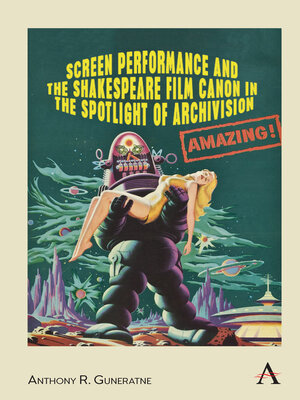Screen Performance and the Shakespeare Film Canon in the Spotlight of Archivision
ebook ∣ Anthem Studies in Theatre and Performance
By Anthony R. Guneratne

Sign up to save your library
With an OverDrive account, you can save your favorite libraries for at-a-glance information about availability. Find out more about OverDrive accounts.
Find this title in Libby, the library reading app by OverDrive.



Search for a digital library with this title
Title found at these libraries:
| Library Name | Distance |
|---|---|
| Loading... |
Without exception, existing studies of cinematic Shakespeare adaptations conform to the long-established paradigm of the descriptive history. Even comprehensive studies of segments of this vast and diverse grouping of films (by Robert H. Ball, Jeremy Sams, Mark T. Burnett, Luke McKernan, et al.) focus on readily available screening prints of films with nary an acknowledgement of the textual uncertainties of films subject to editorial intervention and the vicissitudes of material history; lost, damaged, fragmentary or censored films barely creep within range of critical radars, and even when they do seem only to merit passing consideration. As a consequence, historical accounts of Shakespearean film production are skewed in the direction of conformity, and the dominant perspectives – chronological narrative, intermittent contributions to adaptation studies and episodes in genre history – rely on the assumption of a relatively stable canon of Shakespeare films (that can on occasion be supplemented by rediscoveries). The present work explodes this mythology and explores the underlying assumptions behind the mask of critical convenience. No less significantly, it martials the research of ten years into a coherent, cumulative, chapter-by-chapter argument that proposes methodologies that will not only herald a comprehensive revision of the Shakespeare film canon, but also establish a standard methodology that redirects attention to "hidden" aspects of even the most widely discussed of these texts, thereby making significant methodological contributions to a number of emerging fields of study.







